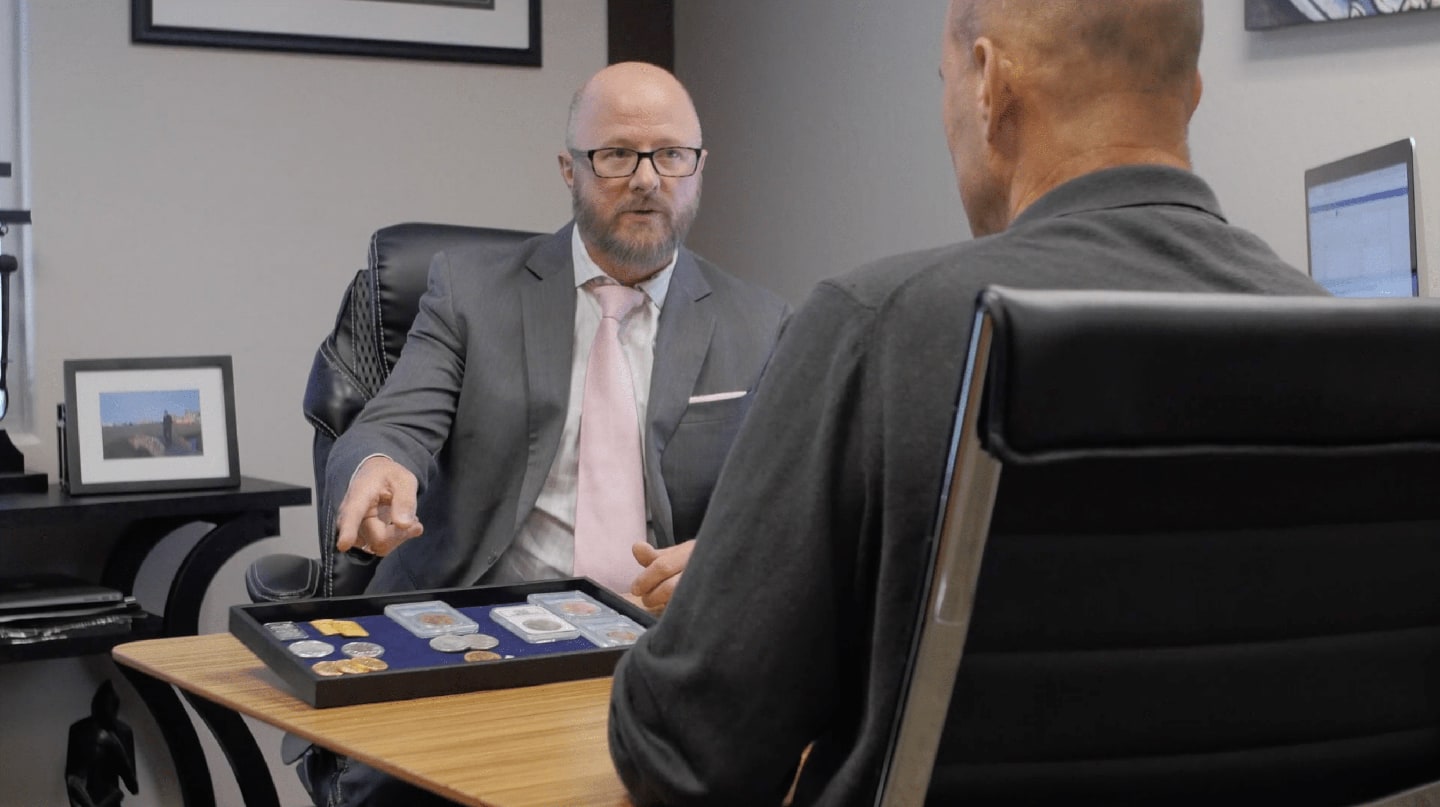About Scottsdale Bullion & Coin
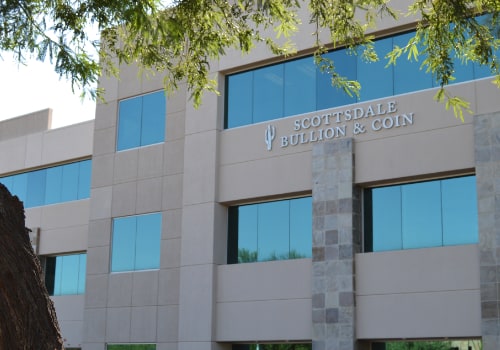
Scottsdale Bullion & Coin (SBC) is a premier precious metals investment firm based in Scottsdale, Arizona. SBC provides you with the highest quality precious metal investment opportunities.
We feel confident that by working with you and educating you on the precious metals markets, you will have the tools you need to make an informed decision when investing in gold, silver, and investment grade coins.
Why You Should Choose SBC
SBC understands that your investment decisions are an important and personal matter to you. That’s why we offer comprehensive education on every precious metals investment opportunity, as well as the potential risks and rewards of each option. Whether choosing to diversify your portfolio for protection, profit, or privacy, SBC will guide you down the path that is most appropriate for your individual situation.

Gold and Silver Bullion
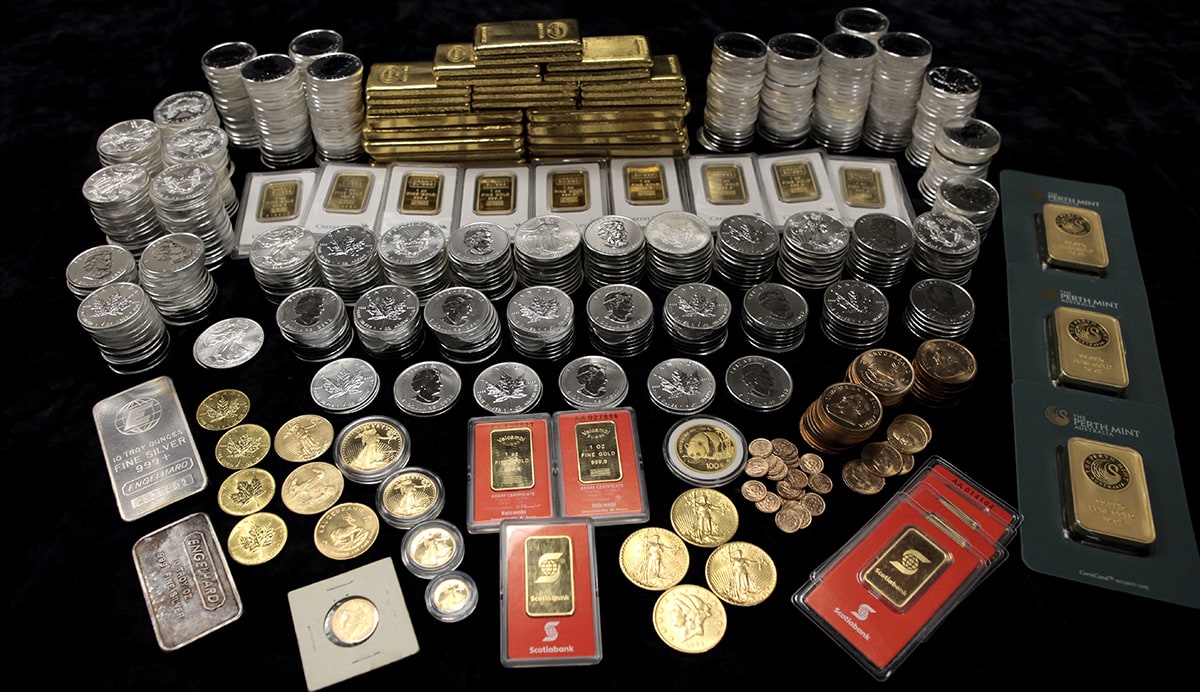
Bullion is a precious metal such as gold, silver, platinum, or palladium, that is typically in the form of bars or coins. At SBC we focus on the two most popular, and most liquid, of the precious metals: gold and silver. The most popular type of bullion for individual investors is in coin form, which is typically produced in denominations of 1/10 ounce to 1 ounce. Bullion is typically for the short-term investor and is usually purchased by individuals looking to generate capital with the volatility of the precious metals markets. While it can be a rewarding investment, trading bullion requires an investor with a higher tolerance for volatility.
Bullion’s price is principally based on the precious metal content, plus the cost of production and distribution. Its value rises and falls with the market price of the corresponding metal. Investors buy bullion expecting that the market price will rise to a point that satisfies their goals, at which point they can sell. Bullion traders base their expectations on trends in the spot or market price. That said, accurately predicting market movement is extremely difficult, and therefore short-term bullion trades carry potential risk.
Investment Grade Gold and Silver Coins
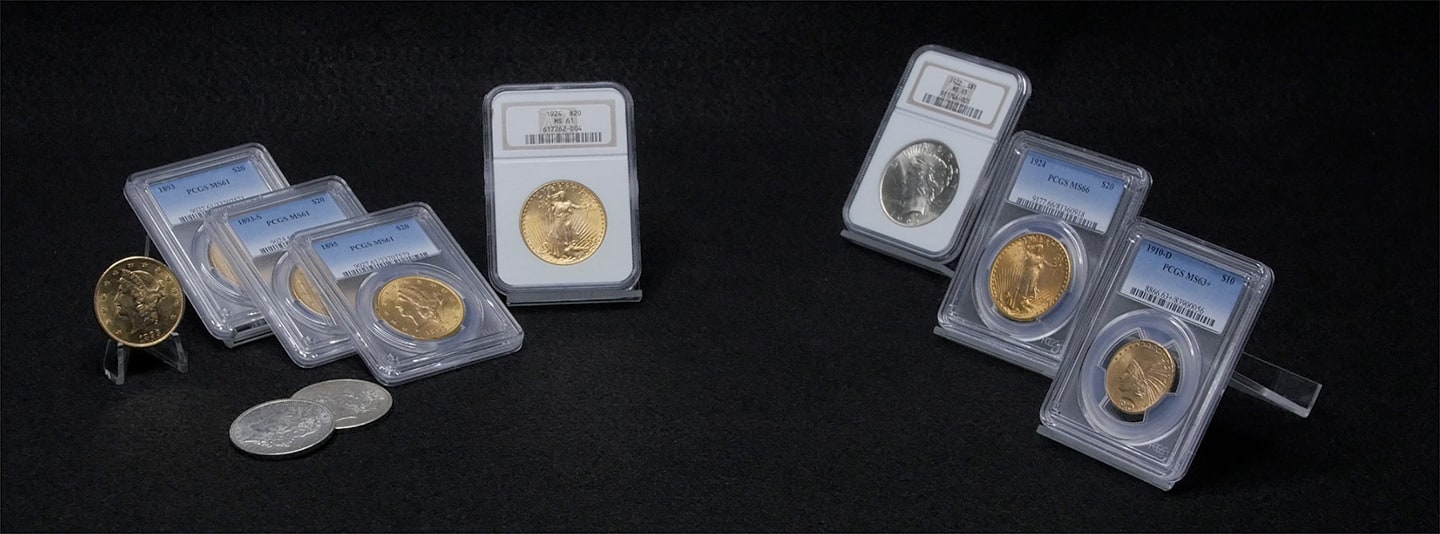
The term “Investment Grade” or “Numismatic” refers to coins that are no longer in production and have limited availability. The United States Investment Grade market is predominately those coins that were produced before the year 1933. Value is principally based upon several factors such as condition, scarcity, and demand, rather than being based on their precious metal content.
While bullion is commonly used as a short-term investment, Investment Grade coins are for the long-term investor. With Investment Grade coins being scarce and having a strong demand from investors, their value has been shown to grow steadily over time. The esteemed Dr. Raymond Lombra, who was commissioned by Congress to study the potential of these Investment Grade coins has proven this. Dr. Lombra illustrated that certain Investment Grade coins have shown a 15% return every year, for 30 consecutive years! These coins are ideal for the investor looking to buy and hold for security and protection, while reaping the long-term benefits of a steady profit. Typically, the hold period for this type of investment is a minimum of 3-5 years, and can be longer.
Many bullion products, depending on quantity, require a Social Security number upon liquidation, whereas numismatic products do not. In addition, because of their special value to collectors, these coins are potentially exempt from future government confiscation… as long as the current administration honors and follows the precedent set by President Roosevelt’s 1933 Executive Order 6102. Investment Grade coins offer privacy not found in bullion and other investments, and they typically offer less downside risk and more upside potential. Therefore, investors looking for long-term profit, protection, and privacy will find the Investment Grade coins to be their best option.
The History of Gold Confiscation
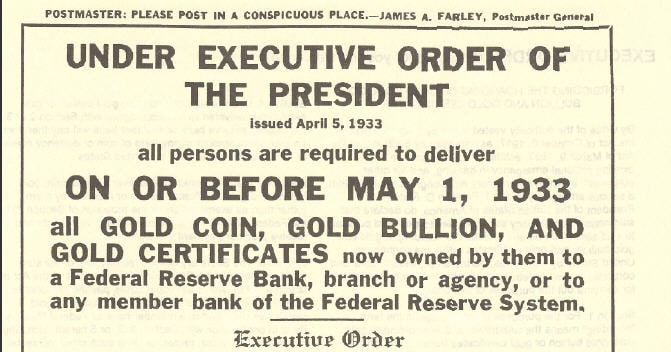
President Franklin Delano Roosevelt faced unprecedented challenges in the 1930s as the country wallowed in the Great Depression. In 1933, he issued Executive Order 6102 to confiscate publicly held gold bullion to shore up the economy. One of the major exceptions to Executive Order 6102 is given in Section 2B: “gold coins having recognized value to collectors of rare and unusual coins.”
This was at best ambiguous, and the only attempt to qualify the definition came a decade after the order was lifted in 1974. The proposed legislation classified rare gold and silver coins as “collector coins from which the gross proceeds from a sale exceed more than a minimum 15% of the underlying precious metal content.” One has to wonder why such clarification was deemed necessary so long after the need for it had expired.
For more in-depth historical information on this topic, watch our report Gold Confiscation – A Timeline of Events
Our Thoughts
It is the opinion of our research team that confiscation remains a very real issue that deserves consideration in our current economic climate. In response to multiple financial crises, the government has had to infuse trillions of dollars into the economy. Paper dollars are fiat money, intrinsically worthless currency that is used only as a medium of exchange. Because the U.S. dollar is backed only by the good will of the United States government, there will always be the threat of collapse. As our purchasing power dwindles, we feel it is only a matter of time until holders of U.S. debt will demand repayment in tangible assets… and gold bullion may be the only asset class that the government can readily take from its citizens to appease its creditors.
Historically, no great country’s currency has ever survived more than 100 years without losing 95% of its value. However, the value of gold has endured through the rise and fall of countless civilizations. In these extraordinary times, it’s only prudent to consider the possibility that the government might be forced to enact Draconian measures, even if those measures may eventually be reversed. Though we can only surmise which gold products might be exempt from future confiscation, our legal system is built on precedent, and the precedent here is Executive Order 6102.
7 Reasons to Own Gold

Many economists believe the U.S. dollar is fundamentally flawed by the infinite amount of money creation, unchecked debts and out of control spending. Combine this monetary policy with the Fed’s ability to artificially suppress interest rates for an indefinite period of time, and you have the potential for the world’s largest market bubble in history. Due to globalization as well as mounting international trade deficits, foreign governments are resisting the impending fall of the U.S. dollar and have even taken measures to support our currency… often at the expense of their own purchasing power! This, demonstrates that we are in the early stages of a massive global currency debasement, wherein we will see tangible assets, particularly gold, rise exponentially in price.
As more of the public continues to recognize the signs of this global currency crisis, they will follow the world’s central banks trend of seeking larger positions in dollar alternative investments and stockpiling real, tangible assets like gold. India’s citizens have continued purchasing an astonishing amount of gold, even though the country’s government has imposed several tax hikes aimed at curbing individual gold purchases.
The Federal Reserve’s continued action of artificially lowering interest rates sends a signal that the price of money is cheap. Artificially suppressing interest rates causes investments to be made in projects that are not supported by real underlying market conditions. This ultimately leads to a boom, inevitably followed by a crash, followed by a new round of quantitative easing and government bailouts, restarting the cycle again. Unfortunately, this is bad news for the U.S. economy, hence the reason to hold physical gold.
The United States economy is now managing more debt than any economy in the history of the world. The number is growing at such an exponential pace that we will not even attempt to reference the amount, because it will be vastly greater by the time you read this guide. Most people are already aware of this fact, but what many do not know is that our total U.S. National Asset Base is now being surpassed by our total U.S. Unfunded Liabilities. This means we owe more than we are worth. More alarming is that no one in Washington, nor the Fed, seems to want to address these concerns.
Many people have no real understanding that the Central Banking System, U.S. Government, and Foreign Governments all hold Gold Reserves. J.P. Morgan himself said, “Gold is money. Everything else is credit.” For some time now the emerging economy of China has swallowed up gold at a ravenous rate. Although China’s appetite for the world’s oldest money has been significant, they aren’t the only foreign power trying to move more of it to their shores. Russia and India have also been significant players amongst the world’s economies.
In less than two decades, the United States has already confronted two major financial crises: the 2008 housing crash and the 2020, Covid-19 government shutdown. The Fed’s response to both crises was simple: print massive amounts of money and keep interest rates artificially low. Gold responded in both situations by soaring to record high values in both situations. Gold is the oldest form of money and the “tried and true” safe haven that will weather any financial storm.
What plan? Great question. Short answer: there isn’t one. Politicians don’t even campaign on economic plans anymore. Their entire focus has shifted to what they can spend money on, and who they will give it to. Regardless of whether it’s going to fund the military, infrastructure, corporate bailouts, welfare, or whatever else you can imagine, it continues unabated. The only bipartisan agreement in this country is to keep spending money. The National Debt has become white noise to the public, the debt ceiling was torn off in the last financial hurricane, and the Fed has publicly stated on 60 Minutes that it can print money forever and to infinity. They keep building this house of cards and pray it never falls down. The end result is a weaker or failing dollar and soaring gold prices.
3 Reasons to Buy Silver Now
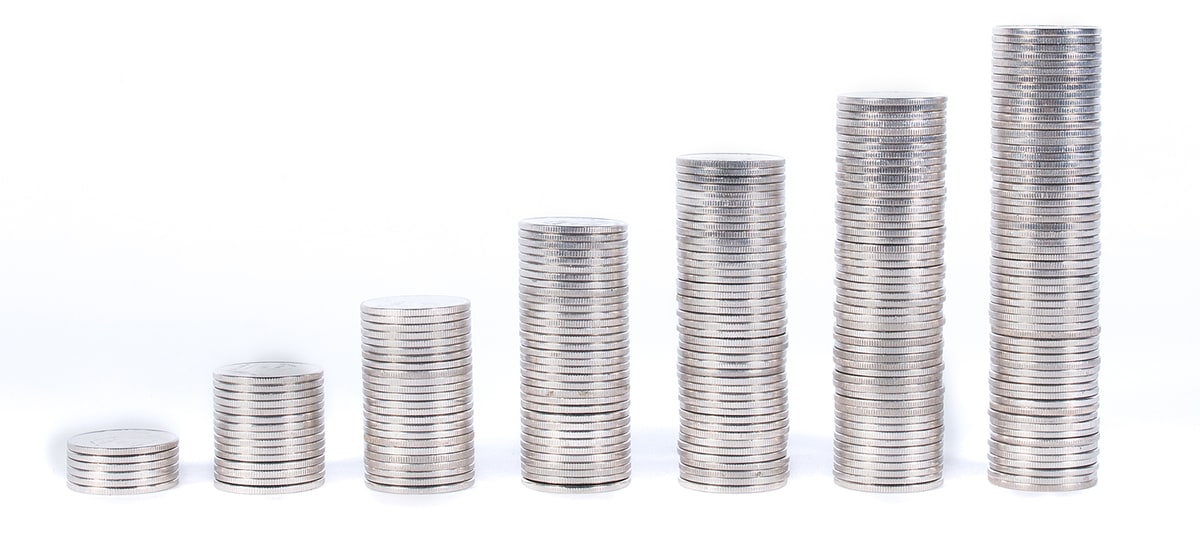
Increasing Demand
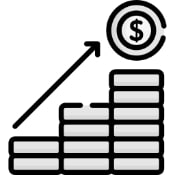
It wasn’t long ago that the amount of silver existing above ground far exceeded that of gold. However, the last half century has seen silver consumption rise exponentially as silver has been utilized more and more in both industrial and technological applications. Conversely, nearly all the gold that has ever left the ground is still in existence. Industrial and technological uses for gold are somewhat rare when compared with silver. Instead gold is largely hoarded in above-ground stores. As a result, experts estimate that the present above-ground gold supply exceeds that of silver by four times.
Scarcity is one of the characteristics that imparts value to precious metals, and while the industrial demand for silver continues to rise, the increases in the global silver supply is not sufficient to meet that increased demand. While the primary users for silver are the technology sector, the jewelry industry plays its part in consumption, and silver’s value will continue to increase due to demand from other segments of the market as well. The medical industry is continuing to increase its demands on the silver supply, as silver’s natural antibiotic properties are being utilized in things like clothing, bandages, and of course medical devices.
Circulated Dollars Hold Value

Circulated silver dollars are a private asset and offer the highest level of privacy that is legally obtainable. Unlike with the sale of securities, when you liquidate your circulated silver dollars, the buyer is not required to obtain your social security number, nor file with the IRS your 1099-b report at the end of the year. You are solely responsible to declare your capital gains.
No more circulated silver dollars are being minted, and the supply is limited while the demand is high. Basic economic theory tells you that this equation helps keep the price strong, even when the price of silver drops in a declining precious metals market.
A Pending Silver Shortage

As previously mentioned, there is a worldwide silver shortage. The world has already witnessed a 93% drop in the global inventory of silver since the 1950s. During that time, there were 10 billion ounces of above-ground silver available, which was a sufficient supply for 140 months. However, by 1970 the available supply of silver was only adequate for 70 months. By 1990, reserves had dwindled to a 15 month above-ground supply. Current supplies are estimated to have diminished to a negligible 6 month supply. The world hasn’t seen an above-ground inventory of silver this low since 1318!
Consumption of silver for industrial purposes has seen an overwhelming surge in recent years. In 1999 only 100 million ounces of silver were allocated to the electronics industry, while in 2013, nearly 270 million ounces were consumed. It is notable that these figures do not include the roughly 50 million ounces of silver consumed in 2013 by photovoltaics, primarily used for solar energy purposes. That industry is expected to continue to expand exponentially over the next several years, a byproduct of both public and governmental interest in “green” energy.
Consumption of silver from investors has been ravenous as well. During the 2020 Covid-19 shutdowns, investors rushed to precious metals for protection. In March of 2020, the U.S. Mint ran out of stock on all Silver American Eagles. A staggering 2.3 million coins were completely consumed in a week and a half. That’s nearly 72 tons of silver!
According to the U.S. Geological Survey, silver ore grades have plummeted 95% in the past 75 years. It’s imperative to understand that it has become increasingly difficult to extract silver from mines because of the cost and time involved in extraction. Consequently, it is estimated that 80% of the silver mined today is produced incidentally while mining gold and copper. Though new mines have been identified in the U.S. and Canada, it may take more than 10 years before a single ounce of silver can be mined.
How Do I Put Physical Metals in My IRA / 401k?
For those clients looking to expand their investment portfolios to include precious metal assets, Scottsdale Bullion & Coin is here to assist you every step of the way. Investments in precious metals can be a vital part of your retirement planning. We understand that you have worked hard to secure your future, but there are uncertain economic conditions in the United States and worldwide that threaten your financial plans. Despite stock market volatility and our weakening fiat currency, precious metals are maintaining their strength.
Investors and financial professionals trust their gold investments to shield them against unstable markets. Having a precious metals IRA will act as a safe haven and offset risk in the unpredictable times we live in. It is easy to rollover all, or any portion of your IRA, into a Precious Metals IRA. As your experts in precious metals investments, we work closely with leading IRA custodians who meet our strict standards and have a respected record of accomplishment. We will gladly help you select the IRA custodian that meets your specific individual needs.
Opening Your New Precious Metals IRA
Establishing a precious metals IRA, also known as a gold IRA, is relatively straightforward. At SBC, we’ve created a streamlined process whereby investors can set up an IRA in as little as 1 to 3 weeks. Our knowledgeable and personable precious metals advisors can guide you every step of the way.
Step 1: Establish a Valid IRA
The first step to investing tax-deferred dollars in physical precious metals is to set up a self-directed IRA. At SBC, you work directly with a personal IRA liaison who will simplify the application process and ensure you submit all required information. This initial setup process is vital to avoid any delays or tax penalties. We’ll help you remain within the good graces of the Internal Revenue Service (IRS) by following all necessary regulations.
Once the paperwork is completed, SBC will send it directly to the chosen trust company on your behalf.
Step 2: Fund Your IRA
Once the self-directed IRA is set up, you need to deposit funds. This is accomplished through IRA contributions, direct transfers, or rollovers from current retirement plans. Eligible plans for transfer or rollover include a Traditional IRA, Roth IRA, 401(k), 403(b), 457 account, or Thrift Savings Plan (TSP).
If you’re putting cash directly into your self-directed IRA, a minimum deposit of $5,000 must be met. Alternatively, the minimum rollover or transfer amount is $10,000. Regardless of which method you choose, the team at SBC will guide you through the process to ensure a timely, secure, and hassle-free transfer.
Step 3: Select Your Precious Metals
The most exciting step in the process is choosing the assets you want to invest in through your precious metals IRA.
The IRS places strict requirements on eligible precious metals for IRAs based on weight, purity, metal type, and more. SBC’s experienced precious metals advisors can provide the best selections based on your specific investment goals, time horizon, budget limitations, and personal preference.
After you purchase your physical precious metals, those assets are sent directly to a depository of your choosing. Your dedicated precious metals advisor will oversee the entire process to ensure everything is delivered securely and on time.
That’s It!
Your precious metals IRA is fully set up, and your nest egg is better protected from inflation, currency devaluation, stock market volatility, and other economic vulnerabilities.
Understanding the Metals Products That Meet Your Individual Needs
If you were buying a house, would the location matter? Would the number of bedrooms, the square footage, or the size of the backyard make any difference? Would you buy whatever your realtor showed you, or would you want to buy a house that meets your needs? Too many people buy metal from coin shops or online retailers without knowing the differences between the products. They never establish a relationship with an advisor who is evaluating their particular needs in order to determine what type of bars or coins will help them meet their goals. At Scottsdale Bullion & Coin, our approach is to tailor a gold and silver portfolio for each individual client’s objectives and concerns. We believe you should buy what’s best for you, not what someone else wants to sell.
To Simplify the Market, You Can Break It Down Into 3 Categories
1. Bullion Bars and Coins
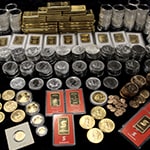
Bullion bars and coins are a great way to speculate on the price of silver or gold while still taking a delivery of the metal. Many clients do this to take advantage of the sharp changes in the market, then sell to make a short-term profit. Bullion bars and coins can be volatile due to short-term speculation. Not all bullion is the same in respect to the tax reports required when reselling it in the market. We advise talking with your Precious Metals Advisor before making a final decision on what bullion product is right for you.
2. Low-Grade Investment Coins
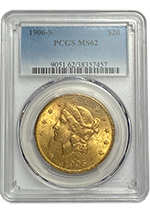
Investment-grade coins have become a popular investment product for those who seek long-term growth and protection. Circulated and lower grade coins are a good choice for people looking for a longer-term hold for their investment purposes. Some people purchase them for use as a barter tool or to hedge against inflation. They tend to be more stable because it’s very difficult to speculate on markets, and they offer more privacy to investors.
3. High-Grade Investment Coins
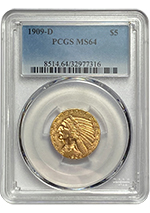
This area of the metals market is geared toward investors who are looking for maximum profit. Typically, these coins are available in very limited supply. These types of coin prices tend to move in cycles and can offer tremendous upside potential for growth. This market is best suited for long-term investors. Short-term speculators rarely profit in this market. Those with patience and proper insight can do very well. These products are also very private. We recommend you read our report, Investment Grade Coins, which gives great insight into this market.
Like all investments, these markets contain risk due to market fluctuations, and past performance does not guarantee future results. We recommend you talk with one of our Precious Metals Advisors for further information. You can also ask them for some of our more in-depth reports and publications.
Avoid Rookie Mistakes


Although it’s a convenient and easy way to own and trade the idea of precious metals, gold and silver stocks, and ETFs are most suitable for individuals with a short-term time horizon. Also, you don’t necessarily own the precious metals themselves. For many people, the negative aspects of investing in gold and silver stocks or ETFs far outweigh the positive points.
...gold coins are integral and I have shifted from GLD, which I don't trust anymore... I don't like the gold stocks at all, I just think that they're toxic.
Gold and Silver ETFs come with a lot of counterparty risk inherent to their chain of custody. This risk becomes greater with systemic uncertainties. If you own GLD, SLV, or other precious metals backed ETFs, you must rely on a counterparty to make good on your investment. If the fund management protocols break down for any reason, your investment is at risk. Not to mention, many of these funds are far over-leveraged in comparison to the physical gold or silver holdings in their depositories.
Q: What is wrong with ETFs? A: ETFs are FAKE gold, silver, or Bitcoin...For example a gold ETF can sell 1 ounce of gold 100 times and more via 1 ETF. That is why I own real gold, silver, and real Bitcoin and keep them very safe, away from banks and Wall Street bankers.
“If you can’t hold it, you don’t own it.”

When you buy an American Eagle, Canadian Maple Leaf, or other bullion coin, you must pay a premium over the spot price. Dealers don’t even buy bullion at the spot price. The premium varies depending upon the dealer and the particular type of coin. Percentages over spot price will have a SPREAD. The price when you purchase a coin is called the “ASK.” The price that you receive when you sell a coin is called the “BID.” The percentage between the BID and the ASK is called the “SPREAD.” To make any money on your purchase, you first have to overcome the additional expense, otherwise known as the SPREAD of the product.
To learn more about premiums on precious metals, click here

Many investors aren’t aware of the differences between bullion products and investment grade coins. They often gravitate toward bullion in hopes that this investment product is easier to understand. Before you make a decision on what’s right for your portfolio, consider the following:
Investment grade coins produce a higher long-term investment return and are an “all around” better hedge than bullion, according to Raymond E. Lombra, Professor of Economics at Penn State University.
If you’d like to read more, request our free report on Investment Grade Coins.

Companies spend a lot of money to advertise coins on TV. You might see infomercials with an enthusiastic salesperson convincing you that what they are selling is going fast, and you won’t ever see an opportunity like this again. Whether you are buying rare coins, graded modern-day coins, or bullion, you will probably be charged an exorbitant premium that you wouldn’t pay through a reputable coin dealer. This type of advertising is very expensive and that cost trickles down to the customer. Beware of purchasing coins through infomercials that look like gold or silver: in many cases, these are only commemorative coins that have been plated.

When you receive something in the mail offering a deal on gold or silver coins, make sure you read the fine print. Many rookie investors have been tricked into buying “replica” coins that are only worth a few dollars.
Learn more about replica coins by reading 4 Reasons Why You Should Avoid Buying Replica Coins

Newspaper ads try to appeal to buyers who do not have much knowledge about investing in precious metals. They may show a big picture of the coin and say that it is “one of only 10,000 minted.” If you see such advertising, just be aware that you are probably buying a coin that the U.S. Mint has not issued and that it may have very little investment value.

If you go to eBay, Amazon, Craigslist, etc., to buy gold or silver coins or bars, you must be very careful. Be sure you are dealing with a legitimate seller. Anyone can put up a nice picture of the coin or bar, but when it arrives, it might not match your expectations. If you buy from a total stranger instead of a reputable dealer, you are taking a chance that you might send your money and never receive the product. Another concern is that China has become very good at counterfeits. Even experienced professionals need the right equipment and resources to distinguish real coins and bars from fakes.
Learn more about ways to spot counterfeit gold & silver by reading:

It’s important, especially when you are new to precious metals investing, to work with an experienced advisor who can guide you in the right direction. Working with an inexperienced advisor can lead to poor choices in the type of precious metals you purchase and work against you when you need help determining the appropriate time to buy or sell. Not all people have the same investment timelines or goals. Make sure your advisor is interested in helping you and not just in collecting a commission.

Buying coins sight unseen can lead to disappointment, especially when you try to resell them.
The value of an investment grade coin is highly dependent upon condition. Although the coins may be certified or raw “uncertified,” the grading must adhere to the current leading standard.
Bids for sight-seen coins will bring premiums that will not be granted by sight-unseen products. A suitable example of this coin standard would be the MS64 St. Gaudens Double Eagle, which would grant a 10% premium for a sight-seen coin vs. a sight-unseen coin. Talk to your precious metals advisor about how to obtain the best coins to fit your goals.

Condition is only one of many factors used to determine a coin’s value. Unfortunately, some dealers attempt to fool new investors into overvaluing pristine coins despite their underperformance in other areas. This deceptive sales technique is most commonly seen with modern graded bullion coins.
New coinage fresh from the mint inevitably receives the highest grading possible. However, these coins have no historical significance and are commonly produced in massive batches, undermining their rarity. This renders most modern graded bullion coins only worth their weight in gold or silver.
To learn more about why modern graded bullion coins may not be a good investment, check out our in-depth report here.

Rookie investors often think that a coin’s rarity confers value, which isn’t always true. Some dealers take advantage of this assumption by misleadingly advertising otherwise unremarkable coins as “exclusive.” This description implies a value that might not exist.
“In many cases, people are paying as much as a 100% premium for these products. And what they're really getting is just a bullion coin.”
Here’s how it works: Dealers strike purchase agreements with reputable mints to obtain bullion coins that will only be available through their brokerage. Then, these coins are advertised as “rare” to give the illusion of worth beyond melt value. In reality, these coins aren’t rare in any financially meaningful sense.
This trend started with exclusive Canadian bullion coins through the Royal Canadian Mint but has since expanded to include coinage from Swiss PAMP, the Royal British Mint, the Perth Mint, the Commonwealth Mint, and the New Zealand Mint.
To learn more about dealer exclusive coins, click here.

To stand out in a crowded market, some precious metals firms make bold promises of “free” gold and silver. These enticing deals are usually offered in exchange for a specific investment amount. When you’re new to the space, it’s easy to fall for these tempting offers. After all, who wouldn’t want “free” precious metals?
Unfortunately, these too-good-to-be-true deals are just that. These dealers sneakily increase other charges by the value of the “free” gold or silver. Investors end up paying the same amount just with the illusion of a complimentary precious metals product.
“There's no free lunch with this type of thing, so you're always going to be paying for that in one way or another.”
If you’d like to learn more about the myth of free gold and silver, click here.

Often, new investors mistakenly assume precious metals products cannot be returned. This misconception keeps people from looking for a buyback policy – something all reputable dealers should have. Gold and silver dealers should offer a buyback policy to show trust and confidence in the products they sell, improve customer retention, and maintain a competitive edge.
Before buying from a dealer, ensure they have a clear, published, and reasonable buyback policy. It’s standard for these policies to cover any precious metal product for any period so long as it was purchased from the dealer.

Invoices are crucial for documenting a precious metals transaction, whether you're buying or trading. Don't let dealers convince you otherwise, even for the smallest amount of gold or silver. Companies that don't offer invoices could be delinquent in other vital areas. You should be equally skeptical of dealers with overly complicated invoices.
Precious metals brokerages or firms need to have transparent, concise, and understandable invoices. If it feels like you need a law degree to understand it, you might want to consider another dealer. All invoices should include – at a minimum – the date, all charges (including spreads), product(s), buyback policy, and signatures.

You pay bills and buy stocks online, so why should precious metals be any different? Unfortunately, it’s not that simple. Setting up a website with high-quality pictures of gold and silver products is easy. As a result, it can be tough to distinguish between a legitimate dealer and a scam by a site alone.
You can avoid inexperienced dealers and outright scams when sticking to companies with a verified physical location. Even if it's just a headquarters, a physical place can tell you a lot about a dealer. It shows the real people behind the company, demonstrates financial solvency, and gives you a place to address your questions.

Investing in precious metals isn’t like buying from Amazon. You shouldn’t expect to get your products delivered the next day. However, that doesn’t excuse prolonged waiting periods. Gold and silver dealers should have clearly stated and reasonable delivery times. A week is standard after your payment has cleared.
Many companies, especially online platforms, leave customers in the dark. Some buyers even contact Scottsdale Bullion & Coin looking for their order, which was placed with other companies. It’s crucial to stick with reputable dealers with well-defined delivery times. Your future self will thank you.

Surging precious metals demand from retail investors has brought wholesalers into the game. It’s now common to see some big-name stores selling gold and silver bullion. The convenience of picking up a gold or silver bar with weekly groceries is undeniable, but the investment merit is questionable.
First and foremost, you’re likely not getting the best deal, even if these big retailers are known for their discounts. Also, the fine print reveals a lack of buyer protection. Even though some of these big-box retailers are known for their outstanding return policies, when it comes to gold and silver, returns are not accepted, and buybacks are non-existent. Furthermore, there’s no experienced precious metals expert to guide your investments.

Conventional investing wisdom says retirement accounts are limited to traditional investments such as stocks, ETFs, and mutual funds. That’s not true! New investors can miss out on hundreds, if not thousands, in savings by investing in precious metals outside of their nest eggs. Believe it or not, the Internal Revenue Service (IRS) allows investors to use tax-advantaged dollars to buy physical metals through a precious metals IRA.
This specialized self-directed retirement account opens you up to a variety of gold, silver, platinum, and palladium assets, including bars, coins, rounds, and more. What’s more, the IRS permits precious metals investments through old 401(k)s and IRAs. You can resurrect forgotten retirement plans by converting some or all the funds into a precious metals IRA. You don’t always need extra cash to buy it, and you don’t automatically have to pay a tax penalty on a transfer or rollover.
With the help of an experienced precious metals advisor, you can establish and contribute to a precious metals IRA, ensuring all IRA guidelines are followed. If a solid chunk of your liquidity is in a retirement plan, physical metals are the perfect addition to your nest egg due to their ability to keep pace with inflation, protecting against the volatility of the broader market.

Remember those questionable promises of “free gold and silver”? Well, that’s not the only sales trick used to entice newcomers in the precious metals market. As with all retirement accounts, setting up a precious metals IRA incurs standard fees. However, some providers promise to “waive” the IRA fees. This is a clever yet misleading way to generate business. Everyone would be eager to pay less to get more. Once again, however, this is an empty promise.
More often than not, the value of those fees is simply shifted around to other costs. You’ll end up paying the same amount regardless of the provider. You’re better off entrusting your retirement plan and precious metals investments to someone who doesn’t make misleading claims from the onset. Providers who are upfront about costs are more likely to be transparent about other important details.

Investing too much or too little is another common rookie mistake in the precious metals space. There’s no shortage of cookie-cutter recommendations floating around, suggesting to invest a certain percentage of your net worth in gold and silver. In reality, these numbers are arbitrary at best and dangerous at worst. Following them blindly could put you in financial jeopardy. No one-size-fits-all investment strategy is worth following.
You don’t want to overleverage yourself by putting your entire nest egg in the precious metals basket. At the same time, underexposing yourself to gold and silver opens you up to the paper market’s inherent risks. The ideal amount of physical metals to hold depends on your financial situation. That’s where an experienced precious metals advisor comes into play. These experts work with you to determine the correct percentage given your unique objectives.
“Precious Metals Advisors customize a portfolio based on each person's needs and wants. This is not a cookie-cutter approach.”
Investment professionals have a broad range of suggestions regarding precious metals allocation, such as:
You’ll need to work with a precious metals advisor to see where you land on this vast spectrum.

Too many investors dip their toes into gold or silver without a concrete plan. This dabbling sets you up for disappointment and financial risk. As with any investment, getting the most out of precious metals requires a clear, comprehensive, and custom-tailored plan. The precious metals landscape is diverse enough to meet the budget limitations, time horizons, and investment goals of every investor.
Before investing in physical metals, it’s crucial to determine your objectives. This ensures you’re investing an appropriate amount in the right assets with a well-defined strategy moving forward. This plan helps you make the most out of your current investments while preventing mistakes in the future.
A reputable precious metals advisor can help you create a long-term plan for maximal protection and returns according to your specific goals.
A goal without a plan is just a wish.–

People inclined to pursue precious metals are often independent, confident, and resourceful. While positive overall, these characteristics can encourage some investors to navigate the precious metals landscape independently. For these intrepid investors, the idea of a precious metals advisor might seem unnecessary or even wasteful. However, this is a short-sighted view.
In reality, the precious metals market is more dynamic and diverse than most people realize. It’s not just about avoiding hidden costs, scams, or tax penalties; it’s about realizing the full potential and benefits of physical metals.
Working with a precious metals advisor helps you avoid costly pitfalls and positions your investments for optimized protection and returns.
Are Your Retirement Goals on the Right Track?
